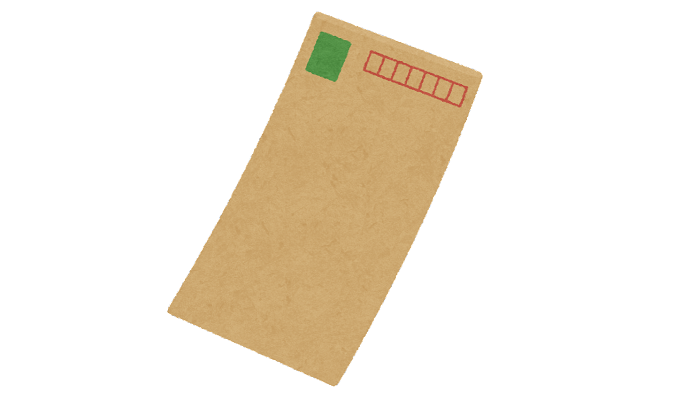Envelopes in Japan
 2021.11.02
2021.11.02Envelopes in Japan
Image
Once a foreigner started living in Japan for a relatively long period, they would probably encounter some occasions in which need to purchase some envelopes, for mailing someone in Japan, for example. Luckily, you can get them easily from a convenience store on a corner of the street, or any other stationary department in a shopping mall, or a hundred-yen shop nearby.
There are a number of envelopes varies in size and design. The most common ones are square-shape envelopes and rectangle-shape envelopes, which are called Japanese style vertical envelopes. They are different in sizes. You may select one that suits your need. The envelopes have a postal code frame printed on the top right, and the space on the top left is for a stamp. Be aware that the address is supposed to be written in vertical way. If you are not confident with writing in that way, don’t worry, you can buy a western style envelope and write the address in the horizontal style. Just be aware that, western envelopes are more common used to send invitation cards and printed pictures, whereas business letters always go with traditional Japanese envelopes.
On a special occasion of resigning from a company, the Japanese way is to hand in a handwritten resignation letter, enclosed it in an envelope without postal code frame. Also, the envelope needs to be a white one, not other colors.
There are other things you have to pay attention to—do not mistake money envelopes with postal envelops. Gift money envelopes (Syuugibukuro) and Condolence gift money envelopes (Koudenbukuro) are the main two types of money envelopes. A Syuugibukuro has notable feature of gorgeous “Mizuhiki”, a gold-silver string or red-white string on it. The envelopes have designs from simple knots to gorgeous flower and animal decorations. Japanese put money inside and offering it to friends, relatives who is about to getting married, having a new born baby, moving into a new house, entering school… occasions considered to be a happy event in the lifetime. Koudenbukuro, on the other hand, is funeral offering. The envelopes have silver, or black and white Mizuhiki, generally in monotone.

(An example of Syuugibukuro)

(An example of Koudenbururo)
Even if it is generally easy to tell the difference between postal envelopes and money gift envelopes, sometimes ones available at 100-yen shop which with simplified design can be little tricky to recognize. They might have no Kanji characters, but just a Mizuhiki patten on it, which make them look like a normal envelope. In order to avoid buying the wrong ones, you could first to see if it has a knot design on the front, and then check if it has a space to write the money amount on the back. Both characters identify this as a gift money envelope.





